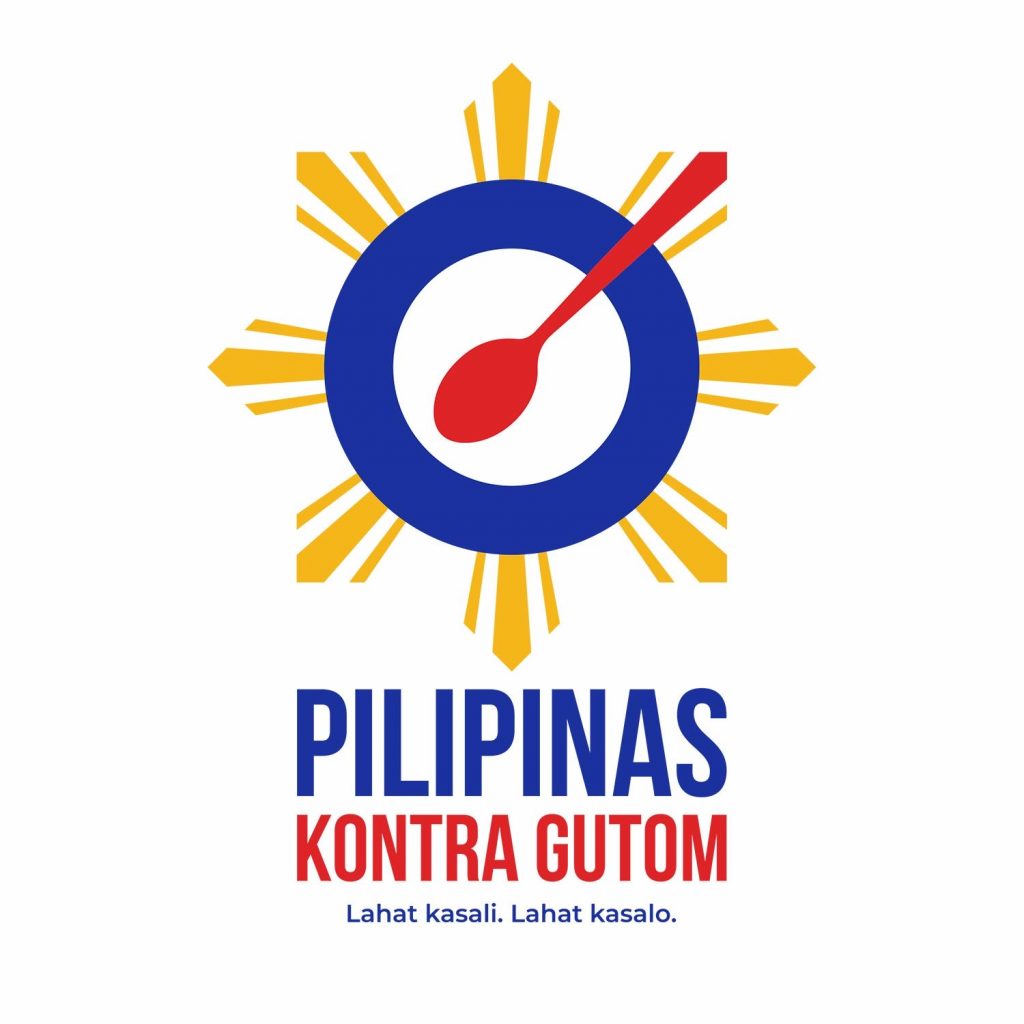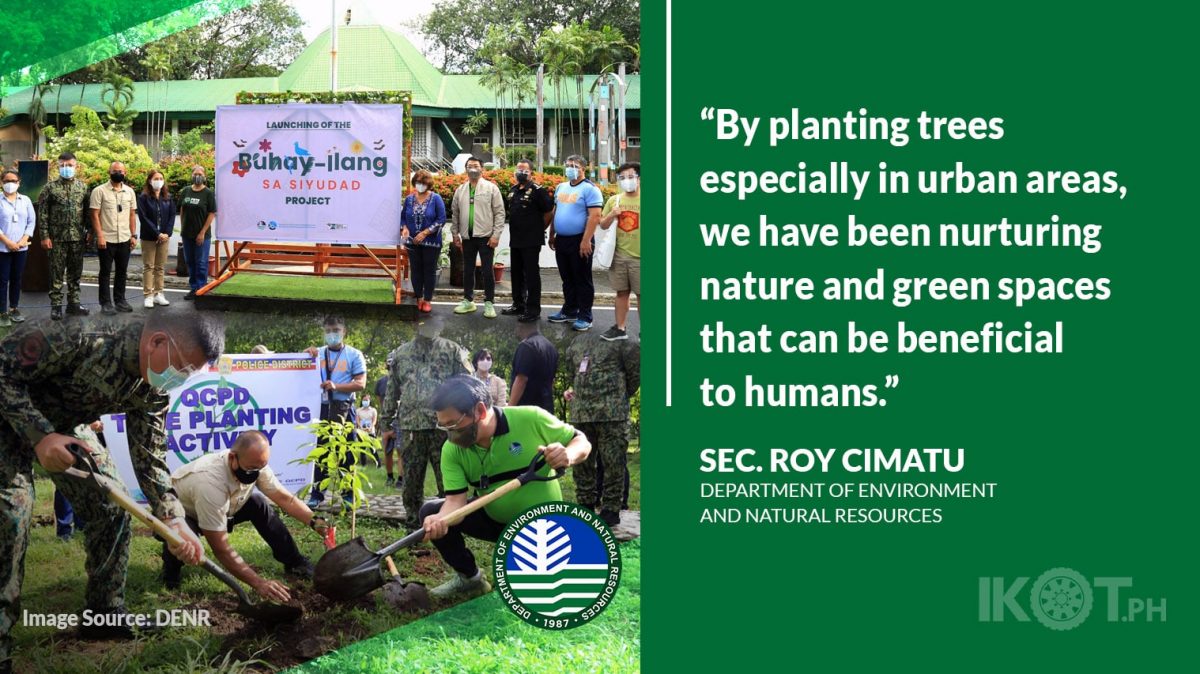An initial 144 seedlings of endemic tree species have been planted at the Ninoy Aquino Parks and Wildlife Center (NAPWC) in Quezon City as part of the efforts of the Department of Environment and Natural Resources-Biodiversity Management Bureau (DENR-BMB) to manage green spaces in urban areas amid the pandemic.
“By planting trees especially in urban areas, we have been nurturing nature and green spaces that can be beneficial to humans as it can contribute directly to health by reducing stress and improving the overall quality of life,” DENR Secretary Roy Cimatu said in a speech read by Undersecretary for Solid Waste Management and Local Government Units Concerns Benny Antiporda during the launch of the DENR-BMB’s Buhay-Ilang sa Siyudad Project at NAPWC.
A total of 144 seedlings of native and endemic tree species were planted during the project launch.
A total of 144 seedlings of native and endemic tree species, which include banaba (Lagerstroemia speciosa) and mussaenda (Mussaenda philippica), were planted during the project launch.
Other species were white lauan (Shorea contorta), apitong (Dipterocarpus grandiflorus), bagtikan (Parashorea malaanonan), dalingdingan (Hopea foxworthyi), guijo (Shorea guiso), hagakhak (Dipterocarpus validus), manggasinoro (Shorea assamica ssp. philippinensis), yakal (Shorea astylosa), akle (Serialbizia acle), igang (Syzygium garciae), lipote (Syzygium polycephaloides), ipil (Intsia bijuga), siar (Peltophorum pterocarpum), supa (Sindora supa), tindalo (Afzelia rhomboidea), and batino (Alstonia macrophylla).
The seedlings were planted in three different areas of NAPWC, including the Grand Rotonda, which is near the BMB’s office; the Cherry Lane, which stretches on the path near the Quezon Avenue gate; and the Buhay-Ilang Sa Siyudad site, an area within NAPWC restricted from any physical development and will be naturally maintained to showcase nature in its undisturbed state, and will provide ecologically representative examples of natural environment.
The launching and tree-planting activities were participated in by at least 229 DENR executives, senior officials, and personnel, and representatives from the Philippine National Police, Bureau of Jail Management and Penology, Bureau of Fire Protection, and Bureau of Corrections.
The tree-planting activity is part of the DENR-BMB’s arboretum project, which aims to transform NAPWC into a repository of Philippine native and endemic trees.
It also aims to strengthen the DENR-BMB’s advocacy for the use and proliferation of native plant species for efficient delivery of ecosystem services.
It also complements the bureau’s Urban Biodiversity Program, which provides a more strategic framework for assessing the status of biodiversity in urban areas.
With the primary objective of effectively managing the green spaces in urban areas, the Urban Biodiversity Program also aims to comprehensively and sustainably manage and reduce threats to biodiversity in urban areas in order to maintain ecosystem services for the benefit of the present and future generations.
DENR Undersecretary for Special Concerns and concurrent BMB Director Edilberto Leonardo said the bureau’s vision to transform the NAPWC’s plant inventory of exotic and invasive species into native tree species started last year and is being implemented in phases.
“In June last year, a ceremonial tree planting activity was conducted by the Bureau at NAPWC planting a total of 107 seedlings of which all are part of the 96 Philippine threatened tree species,” Leonardo said.
Subsequent enrichment tree planting activities were conducted in November 2020 and in April 2021, planting a total of 12 and 60 seedlings, respectively.
According to Leonardo, the most recent was conducted on the first week of June, where 36 native tree species were planted along the park’s perimeter fence near the Elliptical Road and corner of Quezon Avenue.
“We hope the park will also be a learning laboratory for biodiversity conservation and education on different native and endemic plants and animals.”
He is hoping that the tree-planting activities will “contribute to the efficient delivery of ecosystem services” at the NAPWC in order for the park to “not only be an oasis in the middle of a highly urbanized environment, but also a learning laboratory for biodiversity conservation and education on different native and endemic plants and animals.”
The NAPWC is one of the few remaining green spaces in Metro Manila and is among the 94 legislated protected areas nationwide.
It is also classified as a national park by virtue of Republic Act 7586 or the National Integrated Protected Areas System (NIPAS) Act of 1992, amended by Republic Act 11038 or the Expanded NIPAS Act of 2018.


